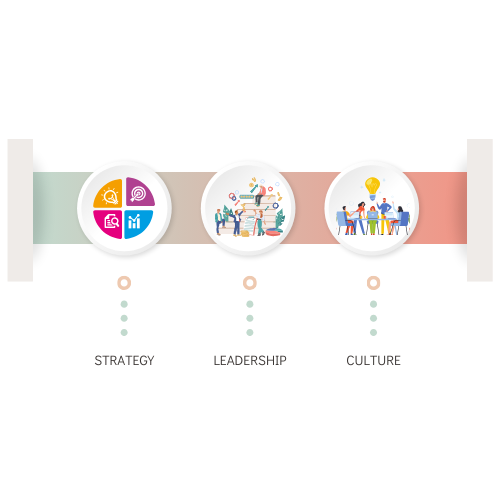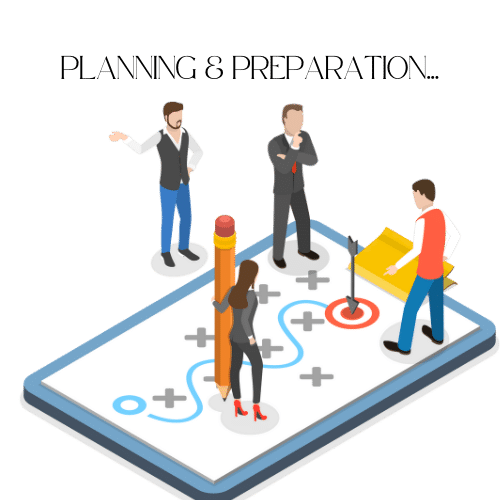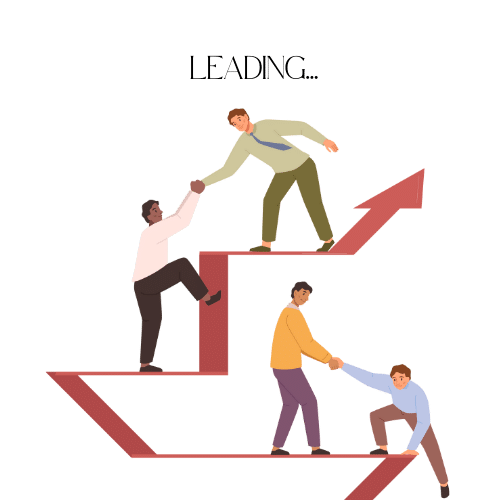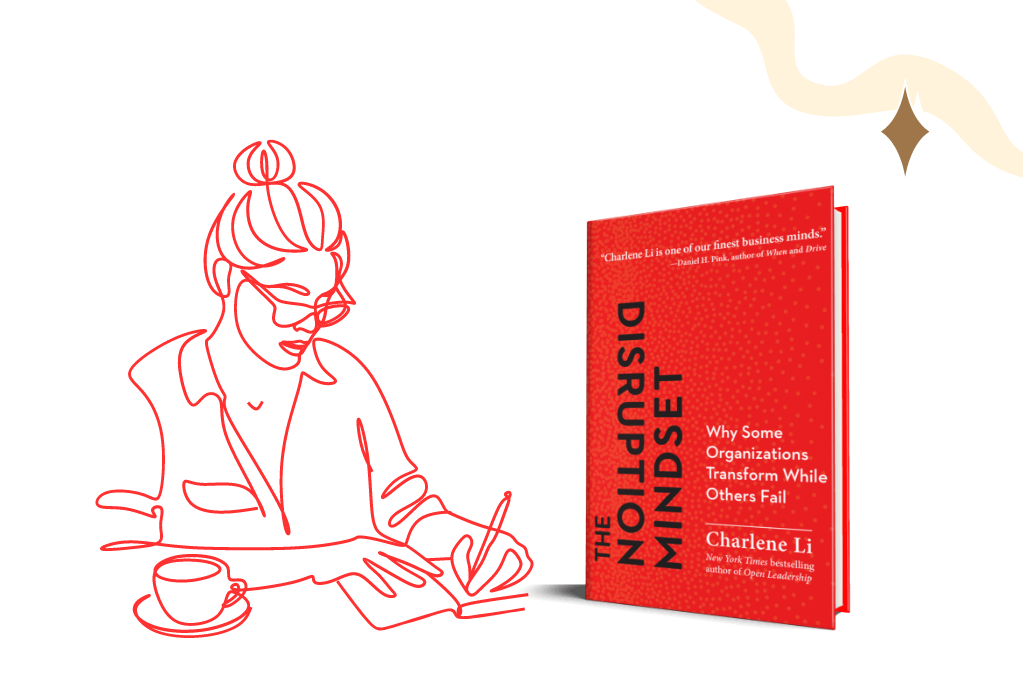Simple Secret of Successful Disruptive Strategies
I skate to where to puck is going to be, not where it has been”
~ Wayne Gretzky
In the world of business, disruptive strategies hold the key to success. But what does it mean to be disruptive or to embody the disruption mindset? Charlene Li, a well-known author of The Disruption Mindset, explains that it involves taking a bold leap and diving headfirst into uncharted territory even without guaranteeing success. This is similar to Alexander the Great’s mindset at the shores of Asia Minor, where he led his men to battle against the Persian Empire of Darius III. At the brink of this tremendous undertaking, Alexander addressed his men with a bold statement, “We will either return home in Persian ships or we will die here.”
This quote encapsulates the spirit of the disruptive mindset, which is characterized by a willingness to take bold action, confront adversity, and pursue greatness at any cost. It is about the courage to pursue new ideas and approaches even if they initially seem unconventional or unpopular. Ultimately, it’s about creating something truly innovative that has the potential to make a significant impact in the world of business.
According to the author, to bring about true transformation that disrupts an industry, one must not just focus on innovation. Instead, you must aim for a breakthrough that leaves a significant impact that drives growth and change.
To achieve this, Li shares three crucial elements:
- Your strategy must be inspired by the needs and desires of future customers. It is about anticipating their demands and creating solutions that impress them.
- Leadership plays a vital role in creating a movement of disruptors. Such leadership inspires others to become leaders, leading to a domino effect of innovation.
- Your organizational culture must foster an environment where creativity and new ideas are welcome and where change and mistakes are seen as opportunities for growth and learning.

Element 1: Preparing for the Big Gulp Movement
Preparing for this transformative journey is not easy, and indeed, there will be difficulties. It is not uncommon for businesses to face significant hurdles along the way, including employee resistance, changing market conditions, and the need to invest heavily in new technologies or processes.
Li recommends you start with your strategy and ensure it follows a customer-centric approach. This means understanding your future customers’ needs and wants, which is vital to achieving disruptive growth.
This was clearly depicted in Adobe’s strategy in 2010 when Mala Sharma, VP of Product Marketing, decided to move Creative Suite from selling perpetual licenses to an online subscription-based model. This was a very new concept and disruptive to the organization and to the market. Not only was it going to change how they sold the product, but also it was expected to decrease revenue for a period of time. Upon launching the model, Adobe’s net income did decline for a few financial reporting periods. Nonetheless, Sharma and her team were successful in launching the model, reengineering the distribution channel, and increasing the company’s market share and trust. In the end, although Adobe’s net revenue decreased, its stock price skyrocketed.
To implement their transformation successfully, Sharma and her team employed these crucial steps:
- Gather and analyze data to support your assumptions and ideas. Ensure that everyone understands the information.
- Communicate and get everyone’s buy-in to work towards the same goals. This is crucial to make the strategy effective.
- Commit fully to the objectives and do not look back. Much like Alexander the Great’s approach of burning the boats, the whole organization is committed to the goals and aligned to work towards the same objectives.

Element 2: Leading a Disruptive Movement
A good strategy relies on the collective effort of motivated change agents who drive and achieve its ultimate goal of disruptive growth. While a good leader can initiate a movement, it takes a truly exceptional leader to nurture and sustain it. As a leader, you must identify potential followers and cultivate them into future disruptive leaders.
Most importantly, it is crucial to establish a clear relationship with your followers. You should openly share their aspirations and concerns, actively engage with them, and consistently communicate to capture their interest and curiosity. By inspiring followers with a powerful manifesto, this movement gains momentum, motivating them to pursue tangible results and take decisive action.
Progress isn’t achieved by preachers or guardians of morality, but by madmen, hermits, heretics, dreamers, rebels, and skeptics.
~ Stephen Fry

Li developed four (4) archetypes of disruptive leaders as a guide into becoming effective drivers of change.
- Steadfast Managers get things done with their team feeling empowered. People love working for them because they are great collaborators and communicators.
- Realist Optimists are highly effective leaders who are open to change with strong leadership behaviors that empower and inspire others.
- Worried Skeptics see the world as a glass-half empty and worry about all of the things that can go wrong. They excel at cleaning up the mess.
- Agent Provocateurs are not afraid of change, they seek out change or new opportunities to improve and make things better.
Each of these archetypes can be used to help you better understand your leadership style, learn how to effectively work with other leaders, and develop future leaders in your organization.
Element 3: Change the Culture with the Disruption Operating System
Culture eats strategy for breakfast every day.
~ Attributed to Peter Drucker
As Li explicitly describes in her book, having a good strategy and exceptional leadership are not enough to drive disruptive transformation that leads to growth and change. It is essential to unlearn the bad behaviors and practices to make room for better ones. The author recommends adopting a flux culture operating system that is conducive to changing the culture for the better.
To change the culture, one needs to navigate the underlying beliefs and behaviors. This involves encouraging openness, empowering employees to act like owners, and embracing a bias for action. In addition, it requires a stable structure (backbone) that supports the process (lifeblood) and lore (soul) of the organization.

The author provides examples of how ING Netherlands adopted a new organizational structure of tribes and squads, much like the Spotify model, to create a more collaborative and decentralized structure. She also provided real life examples of how organizations, like Amazon, employ a ‘press-release from the future’ process to approve new initiatives where everyone takes the first few minutes of the meeting to read before initiating a discussion. Other organizations, like OXO (the global houseware manufacturer), employ lore, symbols and rituals to develop a strong bond and alignment across the team members. For example, OXO’s team members bring back to the workplace any lost glove that they find to visualize the different hands they are designing for. This ritual is a good reminder and helps them focus on the customers their products are made for.
These are all the building blocks that help create a stable culture operating system, which promotes creativity and allows value delivery to flourish, and ultimately, drive towards success. Every organization has their own unique intricacies. You can help your team develop your own flux culture and establish its own structure, process, and lore.
Let’s Take Action Now!
Disruptive movements are propelled by a disruption mindset. Mere talk is insufficient. It necessitates a commitment to action. As a leader, you hold the power to establish a compelling purpose and foster an environment that supports the arduous work required for success. Li highlights three essential elements to transform this vision into reality: a sound strategy, disruptive leaders, and a culture that encourages shedding detrimental habits and embracing new ones. It is crucial to ignite a movement that mobilizes your organization on this transformative journey. These elements are indispensable for sustaining momentum and achieving tangible outcomes: growth and change.
Are you prepared to unleash disruptive growth and change? Read the Disruption Mindset. Dive deep into these concepts and learn from the practical application of these ideas. And, embark on your own disruptive movement. There’s no time like the present.
In case you missed it, we also reviewed Tribal Unity Em Campbell-Pretty. Check it out and share it with your friends or colleagues.
